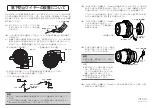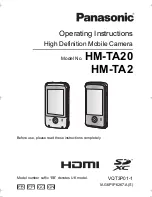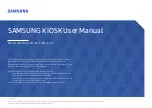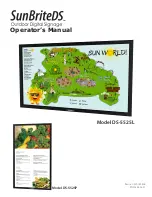
8.4.3 Blob Tool: Results
Tools & Results and All Results list
information
from the current and previous
inspections.
A red box around a tool indicates that the tool failed. Status provides
information
about the
specific
failure.
All Results displays the Result, Time, Pass Count, and Fail Count
information
at a glance. Expand the
inspection
tool to see
specific
results for that tool.
Count
The number of blobs found.
Total Area
The total area of all of the blobs found.
Area Range
The minimum and maximum areas of the blobs found.
Expand Area Range to see the area and centroid (center point) for each blob.
Statistics
Advanced
statistical
information
about each blob.
When enabled, Perimeter, Compactness, Major Axis Length, Minor Axis Length, Major Axis Angle, Eccentricity, Minimum
Radius, Maximum Radius, Minimum Radius
Position,
and Maximum Radius
Position
will be calculated in
addition
to Area and
Centroid.
Available when Calculate Blob
Statistics
is checked. See the following
sections
for more details.
Adaptive
Threshold
The grayscale value for the
software-selected
threshold value used to generate the blobs.
This result is blank if the threshold type is set to Fixed.
Execution
Time
The
execution
time,
in milliseconds, for the currently selected tool in the current
inspection.
Expand
Execution
Time to see the historical minimum and maximum
execution
times
up to this point for the selected tool.
Use the reset
button
in the
Inspection
Summary to reset these historical values.
Status
Status and error messages display as appropriate.
Area
The area (A) is a count of the total number of pixels that belong to the blob.
Centroid
The centroid (x
c
, y
c
) is the point at the center of mass of the blob.
For simple blobs such as solid circles, ellipses, or rectangles, this is the center of the shape. For more complicated shapes it is helpful to
imagine a piece of cardboard cut in the shape of the blob. The centroid is the point where you could balance the cardboard on the
tip
of
a pencil. For complicated shapes—especially shapes with
unfilled
holes—the centroid might lie outside of the shape.
The x coordinate of the centroid is calculated by adding the x coordinates of each pixel in the blob and dividing by the area. The y
coordinate is similar:
Perimeter
The perimeter (P) gives an approximate measurement of the length of the circumference of the blob.
Because blobs are built from individual pixels, it is most
practical
to
estimate
the perimeter by
counting
the
contributions
of individual
pixels on the blob's boundary. The following describes the exact values that are added to the perimeter for each possible pixel
configuration.
In each example, the
description
refers to the center pixel in the corresponding pictures.
VE Series Smart Camera
www.bannerengineering.com - Tel: 763.544.3164
75
















































